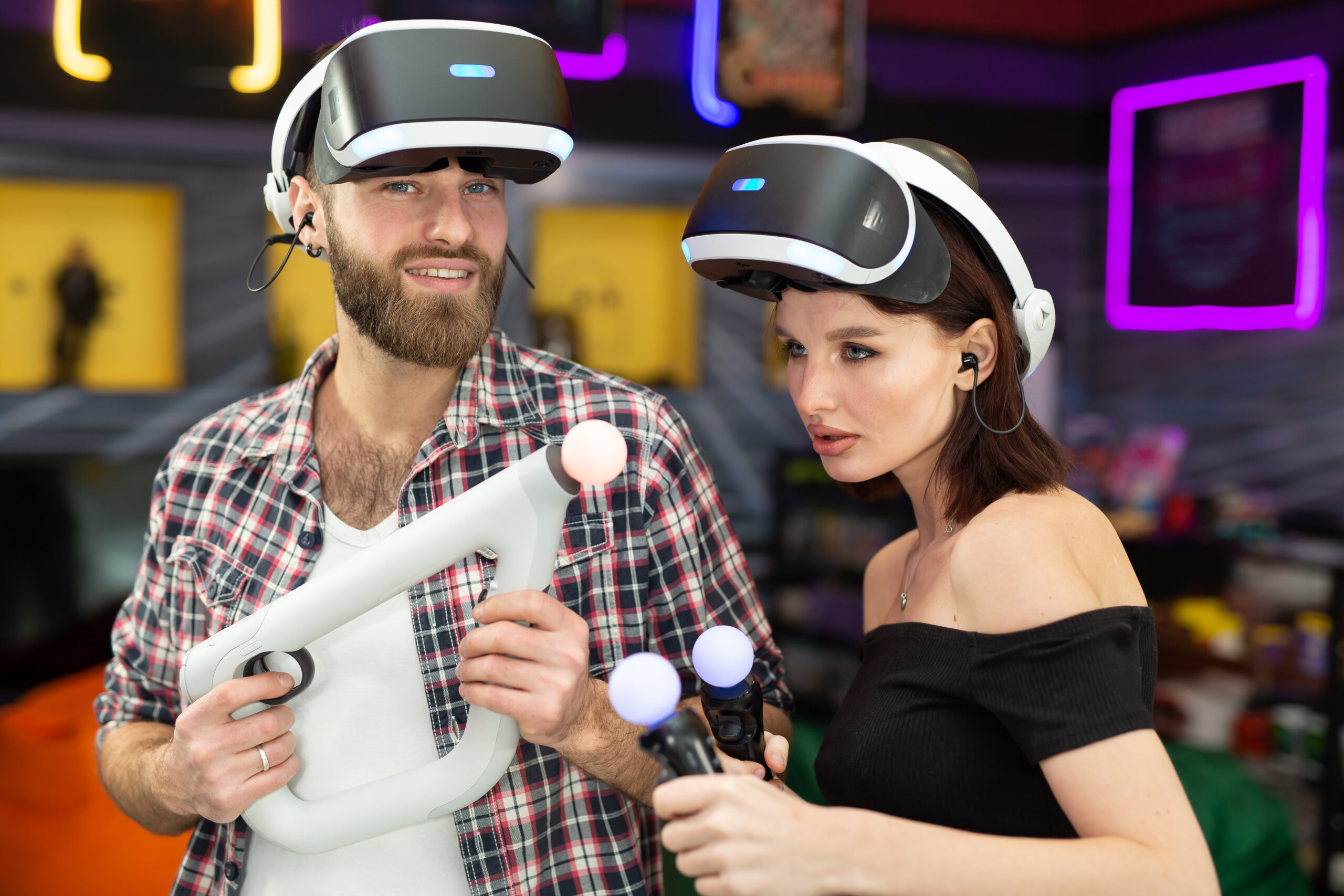VR Models VS AR Model
August 27, 2024
VR Models (Virtual Reality models)
VR models are used to create fully engaging digitally created environments. Users are entirely surrounded by a digital world, which they discover and connect with through VR headsets and controllers. The experience is completely isolated from the real world. Users enter a self-contained virtual space where their actual environment is not visible or relevant.
VR models provide a sense of total immersion. Users feel as though they are physically present within a virtual world, engaging with digital objects, characters, and environments. VR allows for live interaction with 3D models. Users can manipulate, move, or interact with virtual objects as if they were physically there, enhancing the experience of presence.
We use advanced equipment like VR headsets and motion controllers to provide a deeply engaging experience. These devices monitor user movements and replicate them in a virtual environment. Designing captivating game worlds where players can interact with the virtual environment.
AR Models (Augmented Reality Models)
AR models enhance the real world by overlaying digital content on top of the user’s view of their physical environment. Users see both real-world elements and digital additions simultaneously. The experience blends digital elements with real-world environments while interacting with argumentative elements.
AR models interact with the user’s actual context. For example, a digital object might appear on a real-world surface, and the user can interact with it as it fits within their tangible space. AR allows users to see and interact with digital content that is continuously blended into their view of the physical world. This interaction can be situationally responsive, adjusting based on the user’s location or actions.
AR typically uses devices like smartphones (e.g., with AR apps) or AR glasses (e.g., Microsoft HoloLens) that overlay digital content onto the real world through cameras and displays.


VR provides complete engagement in a digital environment, completely isolating users from their tangible surroundings and requiring specialized equipment like headsets and controllers. In contrast, AR enhances the real world by overlaying digital elements on the user’s view, maintaining awareness of the physical setting while integrating virtual content. AR can be experienced using common devices such as smartphones or AR glasses.
In summary, VR models create entirely virtual experiences that transport users into a digital world, while AR models blend digital content with the user’s actual environment, augmenting their space with interactive virtual elements.




